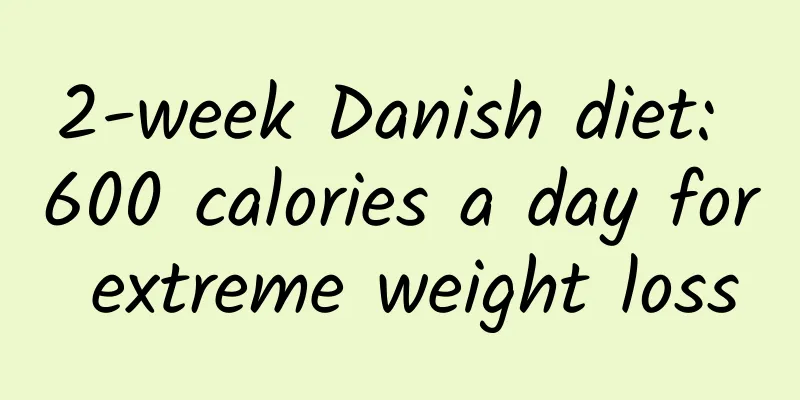Did you eat well today? Nutritionist: Remember these 5 tips to avoid eating the wrong oils

|
Everyone knows that excessive intake of fat in the diet is harmful to the body and increases the risk of cardiovascular disease, stroke, obesity, cancer, etc. Therefore, in the past, people often heard that healthy diet is "less oil, less salt, less sugar". (Situational picture/provided) But does “less oil” necessarily mean health? That's not necessarily the case. In the past, I have met several people who wanted to lose weight in my consultation clinic. They only ate boiled food for three meals a day and only ate chicken breast as meat. This excessively light diet caused the body to lack "essential fatty acids", resulting in endocrine disorders, menstrual abnormalities, hair loss, dry and dull skin, depression, etc. Nowadays, more and more scientific studies point out that "fat" in the diet is no longer such a bad thing. Instead, "refined sugar" is the main culprit of cardiovascular disease. Therefore, we may have blamed "fat" wrongly. For example, the Mediterranean diet is recognized as one of the healthiest diets in the world. It originated on the Greek island of Crete. The dietary fat content of the island's residents is as high as 40% (the general healthy diet recommendation is 20-30%). The amount of dietary fat is three times that of the Japanese, but the mortality rate of cardiovascular disease and cancer among the residents is only half of that of the Japanese. Compared with Americans, who also eat a lot of oily food, the cancer mortality rate of Americans is three times that of the residents of Crete, and the cardiovascular disease mortality rate of Americans is 20 times that of the residents of Crete. From this statistical data, we can see that eating less oil is not necessarily healthier, and eating more oil is not necessarily bad. The two biggest keys are: what kind of oil do you eat? And how do you cook it? It is known that "saturated fatty acids" and "trans fatty acids" increase the risk of cardiovascular disease, so experts recommend that "unsaturated fatty acids" be the main source of dietary fat. Among "unsaturated fatty acids", they can be divided into "monounsaturated fatty acids" and "polyunsaturated fatty acids". The most common monounsaturated fatty acid is omega-9 oleic acid; polyunsaturated fatty acids include omega-6 and omega-3 families, among which LA linolenic acid from the omega-6 family and ALA alpha-linolenic acid from the omega-3 family are important essential fatty acids. The human body cannot synthesize these two by itself and needs to be obtained from the diet. The body also uses ALA to make two other highly functional omega-3 fatty acids: EPA (eicosapentaenoic acid) and DHA (docosahexaenoic acid). EPA helps fight inflammation and reduce the risk of cardiovascular disease, while DHA is closely related to brain function. The physiological functions of ω-3 and ω-6 in the body are exactly opposite. The prostaglandins produced after ω-3 metabolism have anti-inflammatory, vasodilation, and anti-coagulation effects, while the prostaglandins produced after ω-6 metabolism have pro-inflammatory, vasoconstriction, and blood coagulation functions. In order to maintain healthy physiological functions, we must consume both ω-3 and ω-6 fatty acids. The ideal ratio is ω-6:ω-3, which is 4~5:1 (the healthiest ratio is ω-6:ω-3=1:1, but it is really difficult to achieve). In the past simple agricultural society, the diet was rougher and simpler, and this balance was more easily achieved. (Photo provided by nutritionist Donna Chen Yichun) However, with the advancement of processing technology, refined oils (such as soybean oil, corn oil, and sunflower oil) have become the main cooking oils in the home. Coupled with excessive meat intake, this leads to a high ω-6 ratio and insufficient ω-3. The ω-6:ω-3 ratio is as high as 20~30:1, which is a serious imbalance. Excessive ω-6 can easily promote inflammation, increase the incidence of allergies, cardiovascular diseases, and cancer, and is also related to mental illness. Warning signs of eating the wrong oil Fats play a very important role in physiological functions. Therefore, eating the right fats is one of the basic conditions for good health. Many chronic diseases and chronic inflammation are related to eating the wrong fats. Follow Donna and eat good oil (Photo provided by nutritionist Donna Chen Yichun) 1. When cooking at home, it is advisable to use oils with high levels of ω-9 fatty acids For example: olive oil, camellia oil, canola oil, and high oleic sunflower oil. Omega-9 can lower bad cholesterol LDL-C without lowering good cholesterol HDL-C, thus having a protective effect on the cardiovascular system. It is recommended to choose "cold-pressed extra virgin" olive oil or camellia oil, in which the antioxidant ingredients can be better retained and the nutritional value is higher. 2. Use less oils high in omega-6 fatty acids For example: soybean oil, corn oil, sunflower oil, safflower oil, grapeseed oil, etc. Modern people have more opportunities to eat out and have already consumed too much omega-6 fat, so Donna does not recommend choosing omega-6 oil for cooking at home. But if you cook at home, you can use omega-6 fats for some of your cooking and omega-9 fats for the rest. 3. Eat more foods rich in omega-3 fatty acids For example: mackerel, saury, tuna, salmon, seaweed, nuts, flax seeds, flaxseed oil, perilla oil. It is recommended to consume 1 tablespoon of nuts every day and eat fish at least 2 to 3 times a week. If you have special needs such as anti-inflammation, blood vessel relaxation, anti-thrombosis, brain development, etc., you can also directly supplement with "fish oil" health foods to obtain higher amounts of EPA and DHA (vegetarians can choose "algae oil" DHA). When purchasing, it is recommended to choose fish oil with an EPA+DHA concentration of more than 50% to avoid swallowing a bunch of other unnecessary oils. It is also best to have safety tested (such as: no heavy metals) so that you can eat it with peace of mind. (Situational picture/provided) According to the recommendations of the United States, the European Union, Canada and other countries, adults should consume 1000-1500 mg of omega-3 fatty acids per day to maintain health, and patients with cardiovascular disease are recommended to consume 2000 mg/day. 4. Avoid excessive intake of "saturated fatty acids" Eat less animal fats, such as lard, butter, cream, fat, and animal skins, and replace red meat with white meat. 5. Avoid frequent intake of "trans fatty acids" For example: hydrogenated oil, margarine, vegetable cream, shortening, pastries, puff pastry, and fast food. Tips from Donna, a nutritionist No oil is absolutely good or bad, so it is recommended to prepare 2 to 3 kinds of oils with different fatty acid ratios at home, with the principle of being able to consume ω-3, ω-6, and ω-9 in a balanced manner. Also pay attention to the heat resistance temperature of each type of fat. The cooking temperature should be lower than the "smoke point". Even for fats with a high smoke point, Donna does not recommend high-temperature cooking (for example, frying, deep-frying, charcoal grilling), because high-temperature cooking can easily cause the fat to fission and produce carcinogens. I prefer to encourage the use of "water frying" to lower the cooking temperature (add water first and then add fat to stir-fry). Omega-3 fatty acids are very easy to oxidize and are not heat-resistant, so flaxseed oil and perilla oil are not suitable for high-temperature cooking. They are more suitable for eating cold dishes. When purchasing, do not buy too large packages, and store them in the refrigerator after opening. This article comes from: Donna Nutritionist Chen Yichun's blog ※For more information, please visit "Donna Nutritionist Chen Yichun's Blog" |
<<: Will a fast heartbeat shorten your life? Stay away from the 6 major NG behaviors
>>: Is the Ketogenic Diet Really Effective for Weight Loss? The benefits are beyond your imagination
Recommend
Turning into a bird's stomach, 1410 mild fasting is popular! Nutritionist: Don't step on these three super mines
Many people pursue rapid weight loss and believe ...
Should I shave my hair if I have a miscarriage?
The abortion here refers to artificial abortion. ...
What should I eat after miscarriage that is good for my uterus? What should I pay attention to after miscarriage?
Environmental pollution is very serious nowadays,...
Overcome your weight loss plateau! Supplement protein in moderation
I believe that friends who have experience in wei...
Fasting exercises to make you lose weight! Come and do 7 towel stretches
This exercise is best done on an empty stomach ri...
There are many reasons why congenital absence of vagina is difficult to cure
Congenital absence of vagina is caused by the sta...
Can uterine evacuation treat cervical erosion?
Cervical erosion generally refers to cervical col...
How to have a medical abortion? See what the doctor says
If you want to have an abortion through medicatio...
What are the main clinical symptoms of candidal vaginitis?
Usually the clinical symptoms of candidal vaginit...
Pelvic inflammatory disease usually causes pain in three places
Pelvic inflammatory disease is a common inflammat...
Waves in hand! Latin aerobics to slim down your arms and show your lines
Women shake their shoulders, twist their hips, an...
Can endometrial thickening be cured?
Endometrial thickening must be treated as soon as...
Methods for inducing ovulation in patients with amenorrhea
For amenorrhea patients who desire fertility and ...
What is the normal progesterone level at 6 weeks of pregnancy?
The normal value of progesterone at 6 weeks of pr...
How to regulate irregular menstruation
There are many reasons for irregular menstruation...









